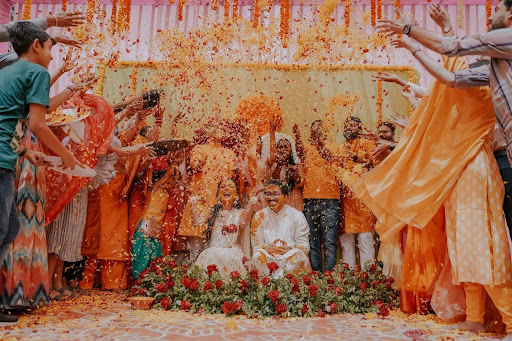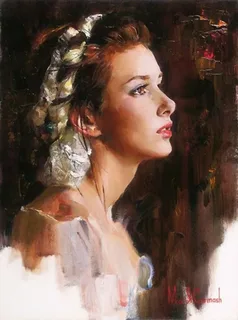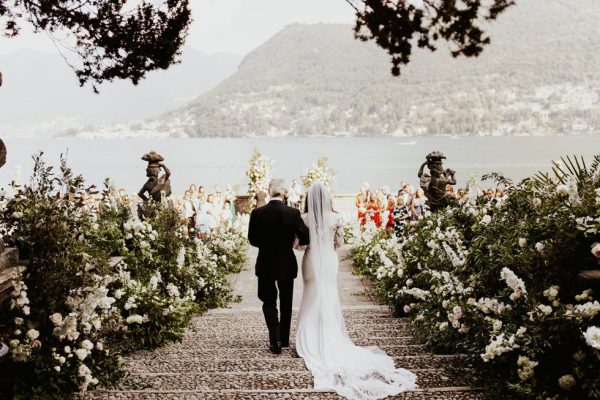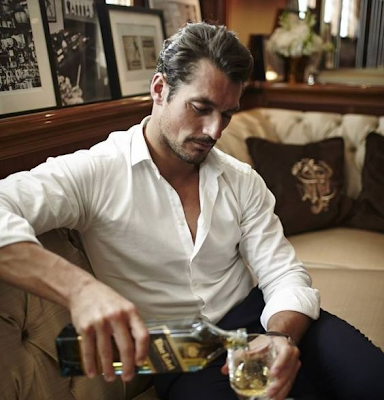Indian weddings are bright, colorful events with many rituals, delicious food, and a huge gathering of people. The sweets being served, the traditional songs that are sung, and the huge array of flowers used throughout the mandap and also given to people are moments that make the occasion a lovely time for everyone.
What Are The Ceremonies Held During A Hindu Wedding?
If you check out Hindu Wedding Cards they have not just the date, time, and venue details, but they also mention some small ceremonies and their timings as well. Prior to attending a wedding event, it is important to know about the typical rituals held there so that you can appreciate why they are performed better. Here is a look at what they are:
- Offerings to Lord Ganesha: Before commencing any ritual, prayers are made to Lord Ganesha, the remover of obstacles, so that the wedding takes place smoothly amidst the blessings of all present. An idol of the Lord is installed and decorated with lovely flowers, after which the priest will invoke the Lord’s presence through various Sanskrit shlokas.
- Haldi Ceremony: Prior to the ceremony, the couples are drenched in turmeric paste, which is an important purification ceremony. Members of the family take part in this event by applying the paste with loving hands to the couple, making it one that is quite fun-filled and joyful. The color yellow signifies fortune, and turmeric is a spice that is believed to ward off evil spirits. Sandalwood can also be used along with other auspicious ingredients. This ceremony brings blessings and well-wishes to the couple from all members of the family
- Applying Mehandi: After this is the mehandi ceremony, where the bride‘s hands and legs are decorated with beautiful designs. It is done to mark the event of becoming a bride as a joyful occasion and is done to the accompaniment of music, dance, and also a lot of friends laughing along. Some of the most intricate mehandi designs are applied to enhance the beauty of the bride. The ceremony is done to enhance level and unity and usher in the celebratory mood of the occasion.
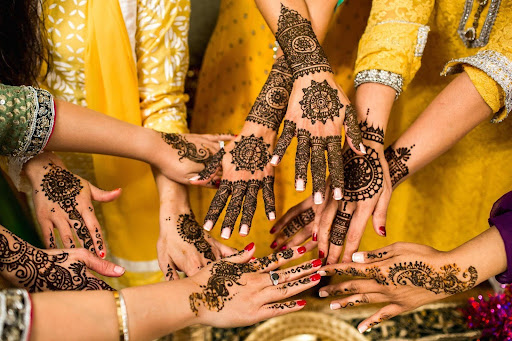
- Sangeet: In the Sangeet, members from both sides of the family come together to dance to the latest music hits, after which they enjoy lovely food. This ceremony gets everyone to participate, so all come together to enjoy dancing to the beats and tunes that are being played. The music can be from a Bollywood movie, traditional folk, or cultural dance. The purpose is to create bonding through celebration using music and dance. The place where the Sangeet is held is decorated beautifully to give everyone a lovely ambience for the event.
- Baraat: After these ceremonies comes the Baraat, where the groom and members of his family head to the bride’s home, where the wedding ceremony is held. During the celebratory procession, there is lively music and dancing, with women now also participating in the event.
- Varmala: The Varmala ceremony occurs prior to the wedding, and it is at this point that the bride and groom meet for the first time. Here, garlands are exchanged by the bride and groom and welcomed by their families. The garlands are made from beautiful and fragrant fresh flowers. It is a ceremony that symbolizes the union of two souls. It also shows that the bride and groom are now agreeing to get married and accepting one another as life partners.
- Marriage: Once both the bride and groom are seated inside the Kalyan Mandap. The father will give away the bride by taking her hand and placing it in the hand of the groom. Sacred water is poured on the hand of the bride’s father by her mother, which then falls slowly into their hands. Next, the sacred fire is lit, and the marriage ceremony, or Vivha Homam, begins. The sacred fire is fed with puffed rice to Vedic Chants, which is a ritual that goes on for quite some time. After this, the couple will walk around the sacred fire seven times. The bride’s dupatta worn on her head is tied to the groom’s dupatta worn on his shoulder. The Mangalsutra is tied around the bride’s neck by the groom, which is followed by an exchange of rings.

Today, Hindu weddings are conducted in grand Mandaps and attended by people from all over the country, both the bride and the groom. If you look at the latest Hindu wedding cards, they are designed very stylishly and are a wonderful keepsake of the ceremony. Knowing the many rituals of the wedding will make you more involved in them, and you can also see how they are performed with greater pleasure and understanding.

